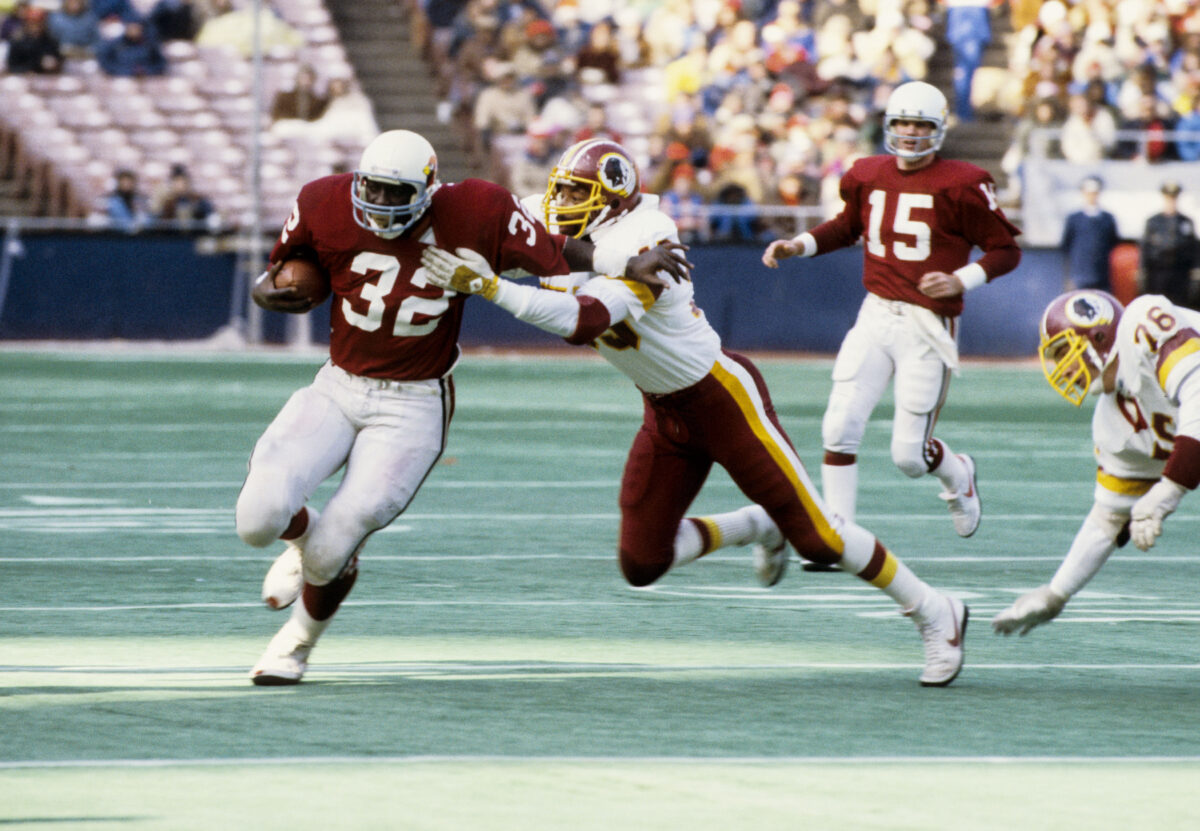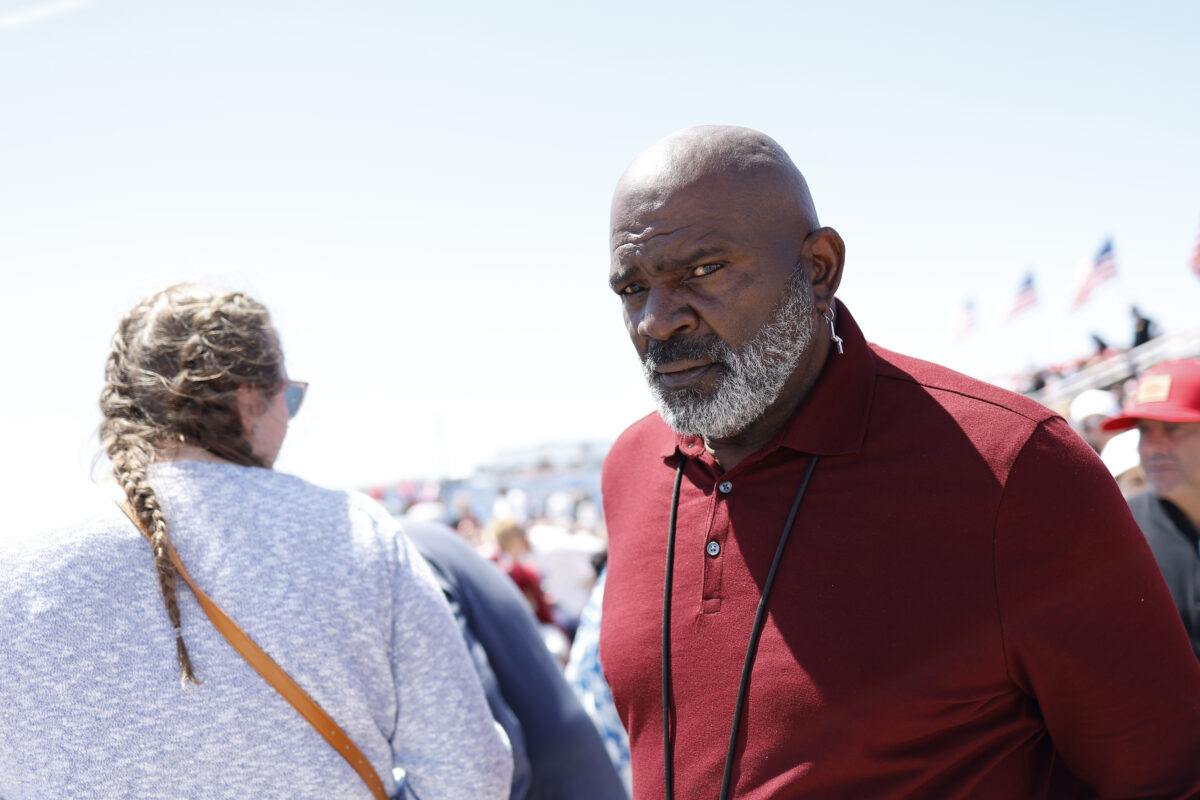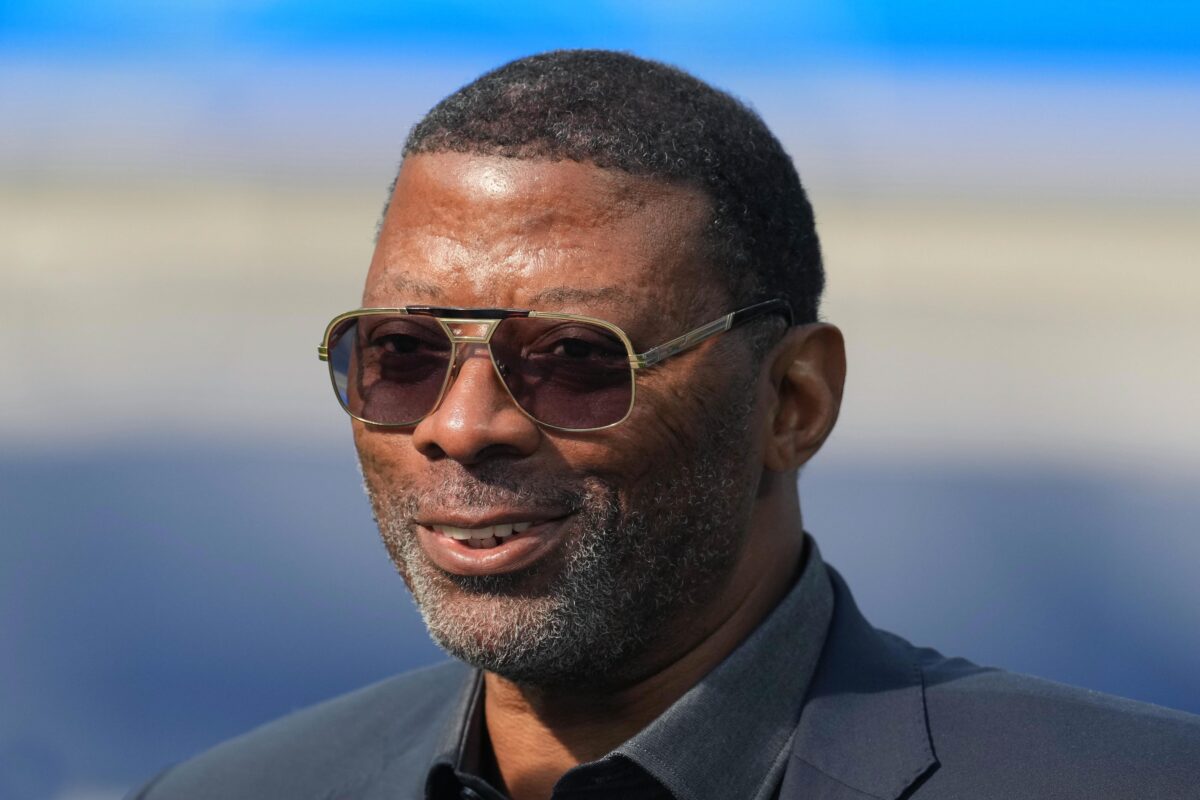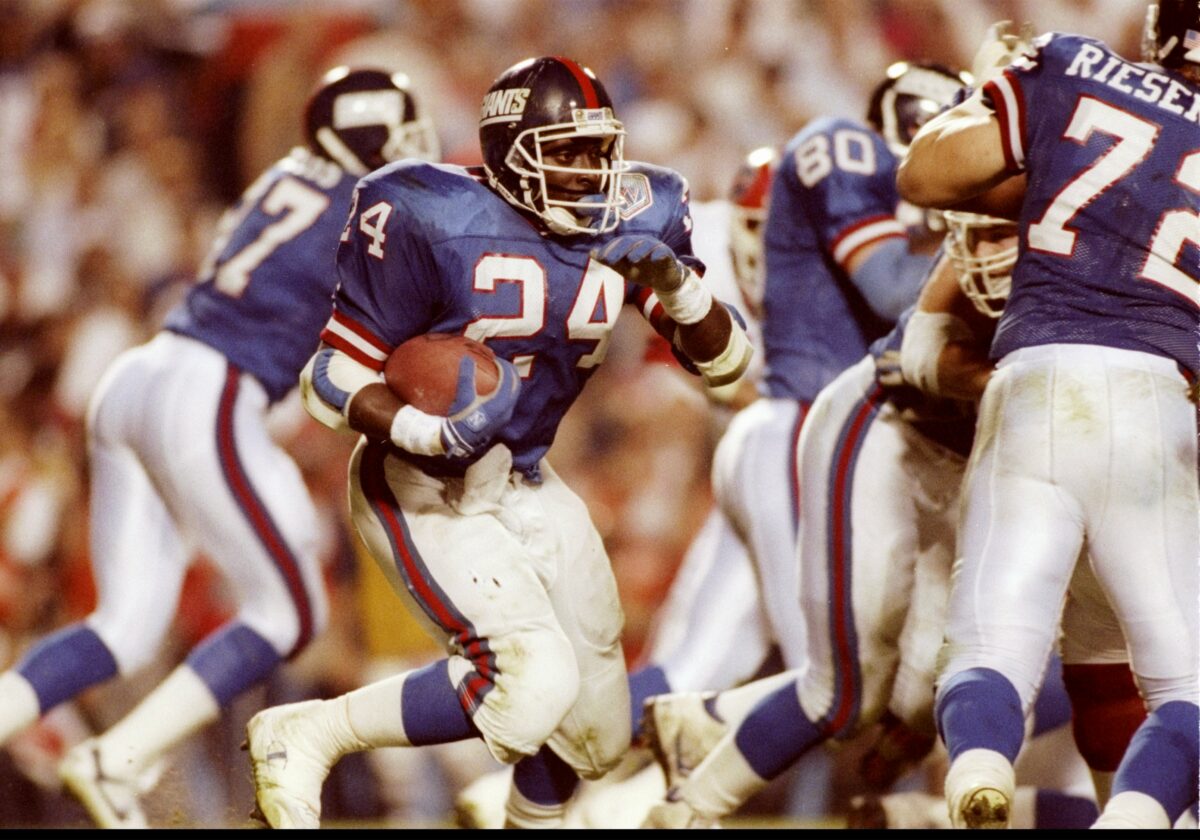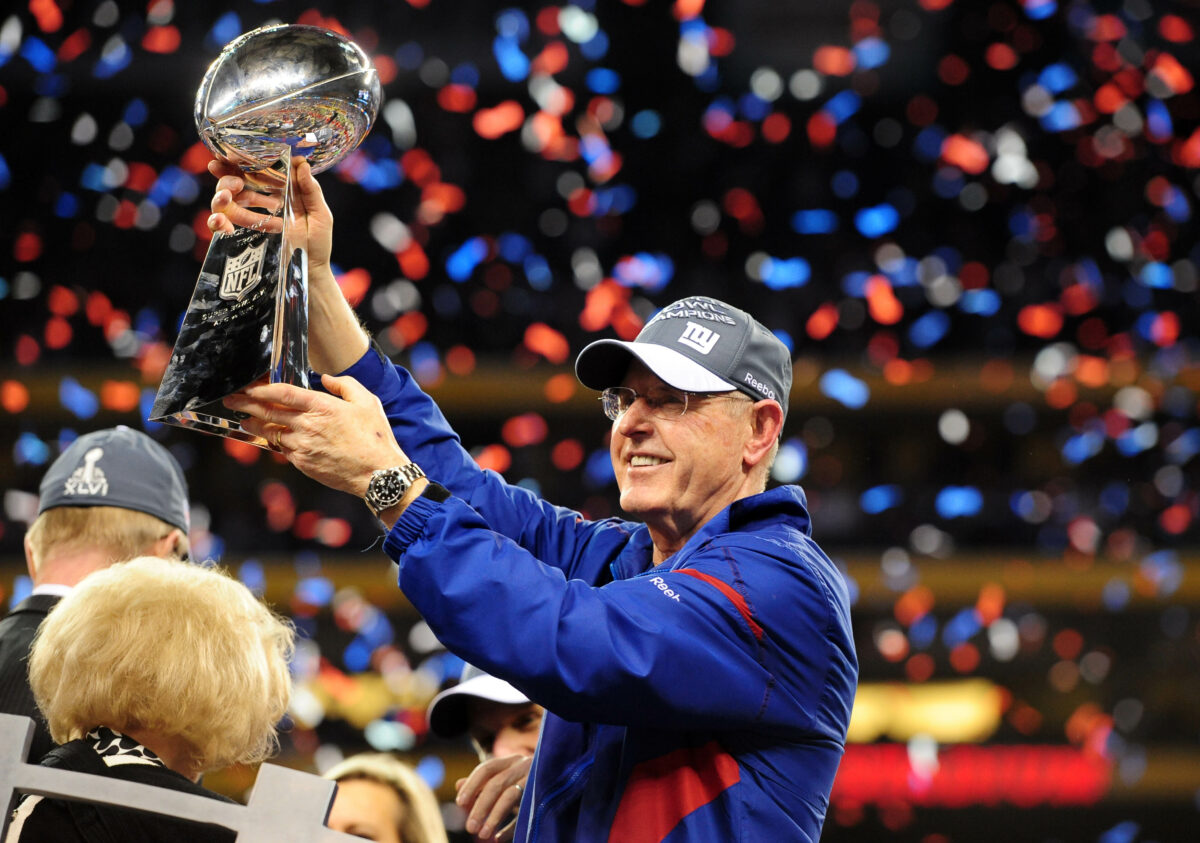I had lived in St. Louis for a little over 15 months when Ottis Anderson was selected by the Cardinals with the eighth overall selection in the 1979 draft.
Charles Alexander was the most talked-about back in the draft that year (one year before ESPN began telecasting the proceedings) and was expected to be picked third overall by the Bengals. However, they selected quarterback Jack Thompson, so it was presumed the Cardinals would take Alexander. Instead, the Cardinals’ choice was Anderson. Alexander went to Cincinnati with the 12th choice and played seven seasons, totaling 2,645 yards with the high being 702 in 1980.
Anderson didn’t have an overwhelming career at Miami, where the Hurricanes were 14-29 in his four seasons and 12-21 in the last three years when he played a lot more. Still, there were 918 yards in 1976, 782 yards in 1977 and 1,266 in 1978, the first player in school history to pass 1,000 yards in a season.
Safe to say, it wasn’t a selection universally hailed from outside the organization.
Fast forward to the summer. What I’ll never forget is being at an early practice during training camp and witnessing up close the physical specimen that embodied the 6-foot-2, 220-pound Anderson. It was impressive. I could sense what a player he could be.
And he was. If there was a roof at the old Busch Stadium, Anderson would have blown it off against the Dallas Cowboys when he exploded through the line for a 76-yard touchdown in the fourth quarter of his debut game that gave the Cardinals a 21-19 lead. While Rafael Septien’s 27-yard field goal won the game for Dallas, that didn’t take anything away from Anderson’s performance.
He rushed for 193 yards that day, which was one short of Alan Ameche’s league record for a rookie and he ended the season with 1,605 yards and was honored as Offensive Rookie of the Year and first-team All-Pro.
His size, strength and speed were a handful for NFL defenses in his early years.
During his first six seasons in St. Louis, which included the strike-shortened 1982 season, Anderson played 86 games and totaled 7,364 yards (85.6 per game). To that point in NFL history, Walter Payton was the only running back to have more rushing yards in his first six seasons: 8,116 in 89 games (91.2 per game). In those six seasons, the Cardinals’ record was 39-49-1.
Now, 32 (his uniform number in St. Louis) years after his retirement following the 1992 season and 38 years after leaving the Cardinals, Anderson remains the Cardinals’ all-time leading rusher with 7,999 yards. In second place is Stump Mitchell with 4,649. After Mitchell, no other Cardinals player in the 104 years of franchise existence has reached 4,000 yards in his career.
Watch: Highlights from O.J. Anderson’s career
Wolf’s memories
In his 20th season as the Cardinals radio analyst, Ron Wolfley has vivid memories of being selected by the team in the fourth round of the 1985 draft.
He told Cards Wire, “I say this in all humility: They drafted me because of Ottis Anderson. They drafted me to come in and block and be a blocking fullback for Ottis Anderson. And one of the reasons why I say that is because when I showed up at minicamp after they drafted me, Dick Jameison, also known as big fella, who was the offensive coordinator, he walked up on me and he looked at me and he said, ‘Are you Ron Wolfley?’ And I said, ‘Yeah.’ And he looked at me and said, ‘I thought you were bigger.’
“Think about that. Here you are first day of minicamp and that’s your first exposure to your team after the draft. And you get the offensive coordinator saying, ‘I thought you were bigger!’”
In retrospect, that wasn’t surprising considering that coaches weren’t involved in the draft led by director of player personnel George Boone.
Former head coach Jim Hanifan would often tell a story about wide receiver Clyde Duncan, who was selected by the Cardinals with the 17th pick in the first round of the 1984 draft. Duncan was fast, but that was about it.
After minicamp in 1984, Hanifan approached Boone and said, “Hey, George, There’s a little problem with your first-round receiver.”
Asked what it was, Hanifan said succinctly, “He can’t catch!”
Duncan played 19 games in two seasons for the Cardinals (and in the NFL), catching four passes for 39 yards with one touchdown that fittingly came in Hanifan’s final game as the head coach.
But I digress. Back to Wolfley.
“Think of that,” he said. “I was 222 pounds in an era where every fullback was 245, 250. And yet they brought me in to block for Ottis Anderson. And what was so ironic about that is I was 6-foot, 222 pounds and Ottis was almost 6-4 (and) 228 pounds. He was bigger than I was, much bigger than I was. And I also tell you, to this day, he was one of the three guys when I came in my rookie year that let me know I was in the National Football League.
“He moved like a man who was 170 pounds. I kid you not. His feet were that good. They were unbelievable to watch how quick that he was, the burst that he had. So many people remember Ottis Anderson as the New York Giant version that won Super Bowls, right? A different guy, a completely different guy at that point in his career. When he came into the league there was nobody freakier than OJ. Nobody. I came in and they put me in a three-point stance in front him and it looked hysterical. This little kid in a three-point stance in front of this guy who was an absolute mountain and I’m behind him in the I-formation.”
Even in practice, Wolfley said Anderson routinely exhibited his abilities.
He said, “We used to do one-on-one drills against linebackers in blitz pickup. They would stand on the edge and they would rush us and there’s nobody around. There’s no offensive linemen for a reference point. It’s just you one-on-one against a guy who’s trying to get around you and it was really unfair to the running back because you had no presence. You had no feel to where the line of scrimmage was. The guy could go wherever he wanted to go. It was very difficult on the running back and it was done that way purposely so that if you could do it in that setting, you were going to be able to do it in a game. No problem.
“And Ottis Anderson was the best blocking running back in the group. He would knock the living dog out of these linebackers that were blitzing. And then we would do one-on-ones after the blitz pickup where we would pick him up in a blitz and protect the quarterback. After we would do that, we would go to one-on-ones where we’d run pass routes against them coming out of the backfield. And Juice tormented the guys that were trying to cover him coming out. That’s how quick and explosive his feet were underneath him. For a man that big it was unfair.”
Wolfley also recalls the weekly routine he had to follow as a rookie.
“He ran the running back room because he was Ottis Anderson,” Wolfley said. “And, I’ll never forget every Wednesday, I had to bring in Church’s chicken for everyone, all the veterans in the running back room and they had specific orders. Each one of them and back in the day, I think I spent over $500 and I kept all the receipts of course. This was 1985. But that was my responsibility and I made sure I did it very, very well because of juicy juice. And that’s what we used to call him, too. Juicy Juice.
“But he encouraged me so much as a young guy. He knew I was a guy that was undersized. And yeah, I tried as hard as I possibly could and blocking for him was an absolute joy as it was for Stump Mitchell. My main memory of Juice is how much respect and love I got in my heart for the guy because of how he treated me. He treated me like a king when I was nobody.”
The trade
In Jim Hanifan’s final year as head coach, many things went wrong for the Cardinals after nearly being in the playoffs the season before. That included Anderson playing only nine games because of injuries. They slumped from 9-7 to 5-11, so Hanifan was fired and replaced by Cowboys assistant coach Gene Stallings, who played for Bear Bryant at Texas A&M and then was an assistant on Bryant’s staff for 17 seasons at Alabama.
To say the relationship between Anderson and Stallings was destined for failure would be an understatement.
As Wolfley says, “Gene Stallings was going to play football his way, not Juice’s way. And Juice was not going to listen to old-school Gene come in and tell him what he was going to do and how he was gonna play. I think their personalities clashed from the very beginning. Gene was Paul Bear Bryant, man. And Gene came in and he was going to do it exactly the way he was gonna do it. Juice was not a head case, but Juice knew who he was and he knew how talented he was and he knew what he liked to do and how he liked to do it and it was directly at odds with Gene. And Gene was coming in and trying to establish his way and how he was going to do it. And it was a bad fit from the beginning.”
So it was that during the 1986 season, Anderson was traded to the Giants for second- and seventh-round picks in the 1987 draft. For history buffs, there was virtually no value in what was acquired. Shocking, I know.
The No. 2 pick (56 overall) was traded on draft day to the Dolphins for third- (70 overall) and fifth-round (126 overall) choices.
The three players drafted were Australian defensive lineman Colin Scotts (third round), punter John Bruno (fifth) and tight end William Harris (seventh). They played a grand total of 17 games with the Cardinals. Scotts was gone after 1987 (seven games), Bruno was cut before the season and Harris played 10 games before ending his NFL career with the Bucs in 1989 and the Packers in 1990. Bruno punted in three games during the ’87 strike and sadly passed away from skin cancer at the age of 27 in 1992.
When I mentioned Scotts to Wolfley, he immediately said, “I remember him well,” and launched into a hilarious account of Scott’s brief time with the Cardinals.
“First of all, Colin Scotts looked like James Bond,” Wolfley said. “He was 6-5 and 285 pounds and looked like James Bond with the same hair. It was unbelievable to see this Aussie walking around and he used to always say, ‘Hey mates.’ We used to tease him, ride him as a rookie back then. Rookies, we rode ‘em hard. We’d rip him him all the time, and he’d be like, ‘Hey, you know what, mate,’ because he used to play Australian rules football and he’d walk around, saying, ‘Hey, mates, we don’t wear equipment, we don’t wear helmets in Australian rules football, mate. And he was serious about it.”
Wolfley called the 1987 training camp at Eastern Illinois University “the most brutal training camp I was ever involved in. Colin Scotts used to walk around talking about, ‘We don’t wear equipment. We don’t have helmets and shoulder pads, mate. We play football the right way over there.’ And guys, whenever they’d go against Colin because they knew how he felt about American football, they tried to kill him. Not just block him, not just do their job. They’d literally try to kill him. So he’d go through practices and just get whipped.”
That brought back one singular memory for Wolfley:
“All of a sudden, he was on the ground and he went into a full body cramp one day. Imagine that. You’re cramped up and he’s laying on his back and every muscle in his body is cramping; a full body cramp. I remember I walked up over him and I said, ‘Hey mate. How those pads doing for you right now?’ It was a mean thing for me to do, but it was like, I’ll never forget it. But he was really arrogant when he came in and we didn’t like that. A rookie coming in and being arrogant, mocking the game we’re playing and he’s playing? He was a nice kid, but he came in with an attitude.”
The Pro Football Hall of Fame
Anderson became a power back with the Giants, playing in two Super Bowls and being the MVP in one. The first was the season in which he was traded. He became the team’s feature back in 1989 when at the age of 32 he rushed for 1,023 yards on 325 carries with 14 touchdowns and was named NFL Comeback Player of the Year.
The following season, he was named Super Bowl XXV Most Valuable Player with 102 yards on 21 carries as the Giants’ offense kept the ball away from the Buffalo Bills. Anderson had turned 34 eight days before that game.
Then-Giants head coach Bill Parcells labeled his carries “time-consuming yards,” and added, “Without him doing the heavy lifting of pounding smash-mouth football right into the teeth of the Buffalo Bills defense, there is no way we would have won that game.”
The Giants controlled the ball for 40:33 in the game won by the Giants 20-19 when Bills kicker Scott Norwood missed a 47-yard field-goal attempt as time expired.
Anderson finished his NFL career with 10,273 yards in 14 seasons, which was eighth-most in NFL history at the time of his retirement. His 81 touchdowns were seventh among running backs and his 13,335 yards from scrimmage were ninth.
At his retirement, everyone ahead of him in those categories are in the Pro Football Hall of Fame.
But Anderson was never among the 15 finalists in his 20 years of modern-day eligibility and is now in the hands of the Seniors Committee, of which I am one of nine members from the overall 49-person selection committee.
We voted this week to cut 31 players to nine after which three will become finalists after a December vote and meeting, and then be discussed among the entire committee in January.
It’s a difficult path. Anderson became eligible in 1998, but voting for 25 semifinalists didn’t begin until 2004. By the time that happened, he had been out of football for 12 years. Falling through the cracks and now in what we call the Seniors Abyss.
I have often said that people looking at the Seniors being considered are probably surprised that many aren’t already in the Hall.
As an example, here are the 31:
Quarterback (3): Ken Anderson, Charlie Conerly, Jim Plunkett
Running backs (5): Ottis Anderson, Roger Craig, Chuck Foreman, Cecil Isbell, Paul “Tank” Younger
Wide receivers (5): Billy “White Shoes” Johnson (kick returner), Stanley Morgan, Art Powell, Sterling Sharpe, Otis Taylor
Offensive linemen (7): Ox Emerson, Joe Jacoby, Mike Kenn, Bob Kuechenberg, George Kunz, Jim Tyrer, Al Wistert
Defensive linemen (2): Jim Marshall, Harvey Martin
Linebackers (5): Carl Banks, Maxie Baughan, Larry Grantham, Clay Matthews Jr., Tommy Nobis
Defensive backs (4): Lester Hayes, Albert Lewis, Eddie Meador, Everson Walls
Many feel strongly that Anderson should at least have his candidacy debated as one of the nine semifinalists. Realistically, that is the case for many in the group. We will find out soon if Anderson gets further than he ever has in 28 years of eligibility.
Get more Cardinals and NFL coverage from Cards Wire’s Jess Root and others by listening to the latest on the Rise Up, See Red podcast. Subscribe on Spotify, YouTube or Apple podcasts.
